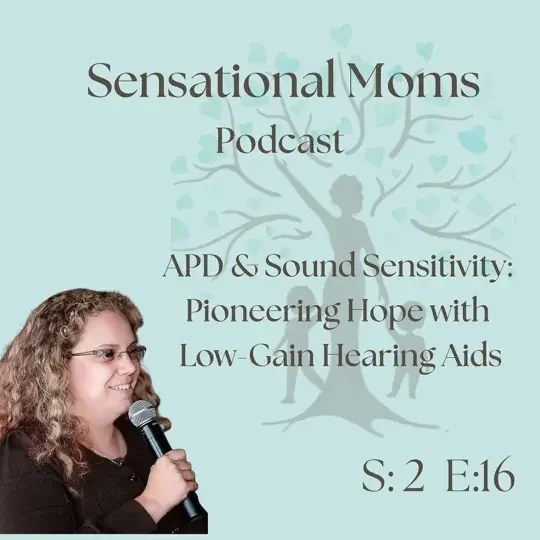Welcome to Dr. Rae’s APD and Sound Sensitivities Blog!
I’m glad you’re here. This blog is where I share stories, insights, and resources on hearing, sound sensitivity, neurodivergence, and the ways our sensory systems shape daily life.
If you’re looking for something specific, try the search bar to the right of this page. You can type in keywords, topics, or phrases, like “auditory processing,” “misophonia,” or “low-gain hearing aids,” and the search will bring up all related posts. It’s a quick way to explore exactly what you’re curious about without scrolling through every article.
Please take your time to browse around…
I hope you find something here that resonates with you!
If you have any requests for new blog topics, please let me know at dr.rae@drraestout.com.
Drowning in Sound
Have you ever felt overwhelmed by everyday noises, like you’re drowning in sound, even when it’s supposed to be calm? That’s exactly what Dr. Rae Stout explores in this powerful video, Drowning in Sound.
In this segment, she shares deeply relatable experiences and expert insights into how auditory overload can impact those with sensory sensitivities. You’ll gain a clearer understanding of:
What it feels like when even gentle noises become unmanageable
The emotional and cognitive impact of pervasive auditory overstimulation
Why some people may struggle to tune into what really matters in the soundscape
Whether you're navigating your own auditory world or supporting someone who does, this video offers both empathy and clarity. Let’s dive in and listen more closely.
Beyond the Booth: Why APD Assessment and Intervention Need a Complete Overhaul (Pre-Publication Draft)
Summary for Parents: If your child struggles to listen in noisy places like classrooms or restaurants, current auditory processing tests might miss their real difficulties. These tests are like taking a single photo instead of watching a movie - they don’t show how listening gets harder when your child is tired, stressed, or dealing with background noise all day. The tests often use boring stories and artificial sounds that don’t match real life. Many kids who really struggle end up “passing” these tests and don’t get the help they need. We need better testing that measures listening effort (how hard it feels), fatigue (how performance changes throughout the day), and considers your child’s personality and interests. The good news? Some clinicians are working on new approaches that actually measure what matters for real-world success.
Virtual LGHA Fitting: Beyond Traditional Real Ear Measurement (REM) Verification
Call to Action
The audiological profession stands at a crossroads. We can cling to outdated verification methods that barrier access and miss functional deficits, or embrace evidence-based virtual protocols that serve underserved populations with superior outcomes.
For patients with normal hearing thresholds and legitimate auditory difficulties, advanced virtual fitting protocols represent not just an acceptable alternative, but the superior standard of care.
The choice is clear: prioritize real-world function over static verification, expand access over procedural compliance, and embrace innovation over tradition.
The future of audiology is virtual, functional, and patient-centered. It’s time our regulations caught up.
Podcast: Pioneering Hope with Low-Gain Hearing Aids
https://podcasts.apple.com/.../auditory.../id1767942422...
What does sound sensitivity and auditory processing disorder look like in real life for a family? Possibly melt-downs, hurting relationships, walking on eggshells, avoiding fun outings, attention struggles, social skill struggles, sleep difficulties, reading issues... the list goes on.
Wait! Before you say "My kid hears just fine" or "My hearing is ok..." This is often an unidentified source of defiance, conflict, reading, social & attention difficulties... and more. You really might be surprised!
Dr. Rae Stout joins me in this episode as we dive into APD & hearing sensitivites.
Forebrain Demonstration: Dr. Rae Sings
Dr. Rae Sings with Forebrain: A Demonstration
Lyrics:
One hour of heaven in seven long years,
And I was left there amidst my own fears.
I waited with stars in the dark of my chest—
But the sun rose without me and then it just passed.
They danced in the light that once lived in my head,
While I was trapped in the closet, my spirit fell.
They feared what I felt.
They feared what I saw.
So they punished the dreamer for the glow of the dawn.
https://suno.com/s/l1VubJEs8hEN62Hqhttps://suno.com/s/l1VubJEs8hEN62Hq
The Adults with APD We Never See (And Why I Wish We Did)
Every adult suffering in silence with APD represents years of unnecessary cognitive fatigue, reduced work performance, higher burnout rates, and lost potential. Research shows that when adults get proper auditory support, the benefits are substantial and lasting – when the system actually follows up with them.
The irony is that I genuinely prefer working with adults – they can articulate their experiences, collaborate in treatment decisions, and provide detailed feedback about what’s working. But the very people I’m most equipped to help are the least likely to seek that help.
Looking Beyond the Limp: Rethinking Auditory Processing and Sensitivity Disorders from a Neurodevelopmental vs Acquired Perspective
Dr. Teri James Bellis’s book When the Brain Can’t Hear has become a touchstone for many people. It is one of the very few books written for a general audience about auditory processing disorder (APD), and it is easy to see why it is beloved.
It is human. It is validating. But it is also incomplete. It represents one kind of sound sensitivity (in her case, it was the perception that everyone was upset with her and an inability to understand. tone of voice), acquired after trauma or stroke. It does not capture the whole picture of developmental auditory processing and sensitivity disorders, which is where most children fall. And that difference matters, because if you only ever think of these issues as being something like Bellis’s story, you will miss an entire group of people who have never once known what it is like to process sound without struggle.
“Unmasking Social” Podcast: Finding Common Ground in a Noisy World
Today, August 15, 2025, I recorded an episode for the Unmasking Social podcast hosted by Sharon Baum, MA, CCC-SLP. Sharon is a speech-language pathologist with almost 15 years of experience in autism, ADHD, and social communication. She draws on her background in educational settings to create thoughtful, grounded conversations for neurodivergent teens, young adults, families, and professionals.
We did not just talk about hearing. We talked about listening.
Fix the Signal, See the Change
Introduction: Why Current Measures Miss the Point
In audiology, we like numbers. The audiogram shows the softest beeps a person can detect in a quiet booth. The Speech Intelligibility Index (SII) gives a number for how much of the speech spectrum is accessible, also in quiet. Real-ear measurement tells us how much sound reaches the eardrum, but not to the brain.
These are valuable tools. But they all stop at the cochlea or eardrum. None tell you what happens once sound enters the brain for auditory processing, and none guarantee comprehension. A perfect audiogram, a high SII score, and a textbook real-ear measurement can still belong to the same child who struggles to function in noise every day.
It’s Not DEAFiance. It’s Living Without Full Language or Warning
If you are not a fluent signer, chances are neither is your child, which means he probably has not had full, consistent language access yet. Without complete access to language in every setting, there will always be gaps in understanding. And if you and your child are not both fluent, it is important to ask how communication is really happening at home. Is it partial signs, gestures, pointing, or guessing? Are important details being missed? Without hearing, you are constantly surprised by your environment. Things happen without warning. People appear behind you. Instructions change midstream. That unpredictability builds anxiety, frustration, and a drive to control as much as you can.










